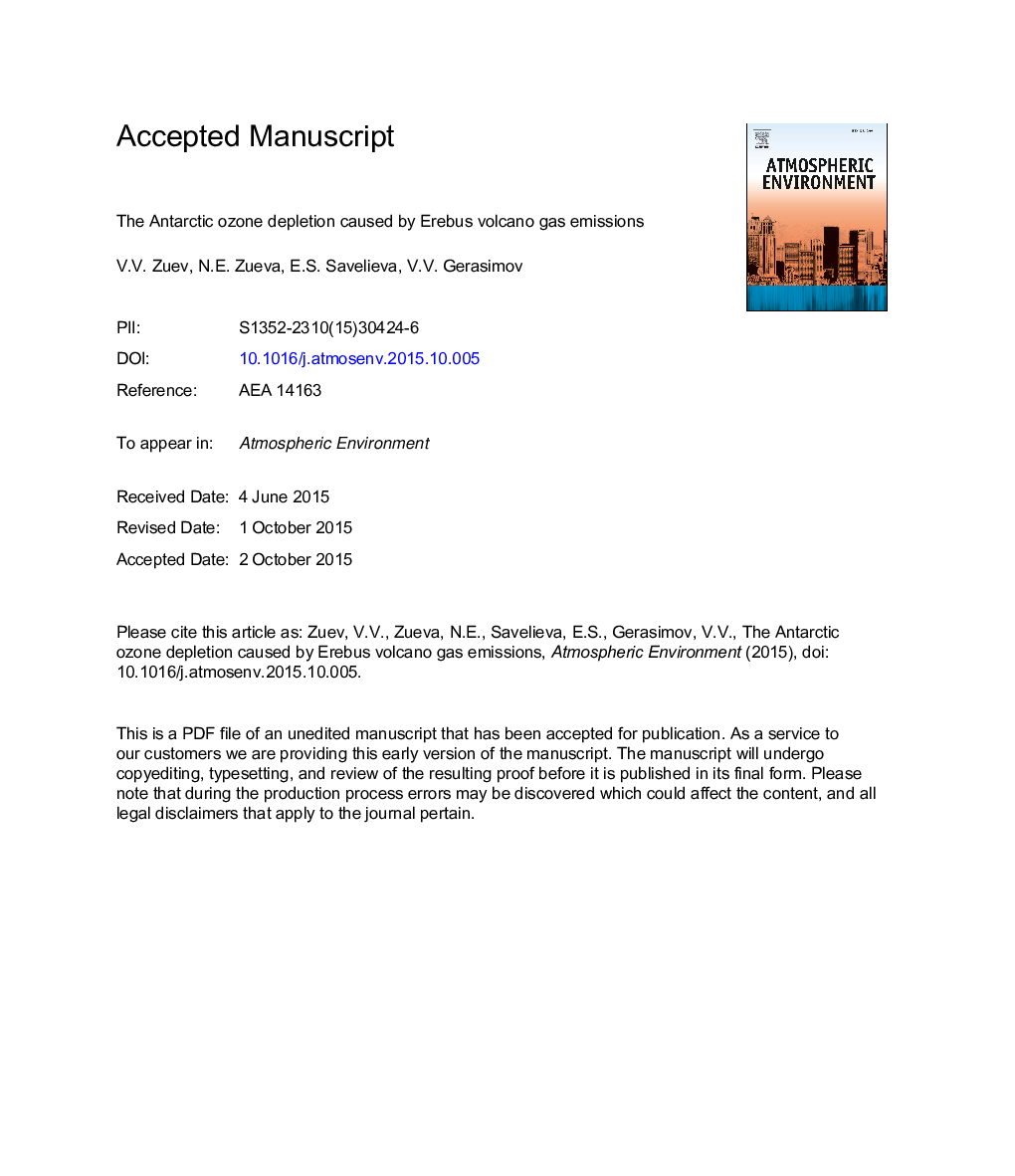| Article ID | Journal | Published Year | Pages | File Type |
|---|---|---|---|---|
| 6337020 | Atmospheric Environment | 2015 | 29 Pages |
Abstract
Heterogeneous chemical reactions releasing photochemically active molecular chlorine play a key role in Antarctic stratospheric ozone destruction, resulting in the Antarctic ozone hole. Hydrogen chloride (HCl) is one of the principal components in these reactions on the surfaces of polar stratospheric clouds (PSCs). PSCs form during polar nights at extremely low temperatures (lower than â78 °C) mainly on sulfuric acid (H2SO4) aerosols, acting as condensation nuclei and formed from sulfur dioxide (SO2). However, the cause of HCl and H2SO4 high concentrations in the Antarctic stratosphere, leading to considerable springtime ozone depletion, is still not clear. Based on the NCEP/NCAR reanalysis data over the last 35 years and by using the NOAA HYSPLIT trajectory model, we show that Erebus volcano gas emissions (including HCl and SO2) can reach the Antarctic stratosphere via high-latitude cyclones with the annual average probability P¯ann. of at least â¼0.235 (23.5%). Depending on Erebus activity, this corresponds to additional annual stratospheric HCl mass of 1.0-14.3 kilotons (kt) and SO2 mass of 1.4-19.7 kt. Thus, Erebus volcano is the natural and powerful source of additional stratospheric HCl and SO2, and hence, the cause of the Antarctic ozone depletion, together with man-made chlorofluorocarbons.
Keywords
Related Topics
Physical Sciences and Engineering
Earth and Planetary Sciences
Atmospheric Science
Authors
V.V. Zuev, N.E. Zueva, E.S. Savelieva, V.V. Gerasimov,
